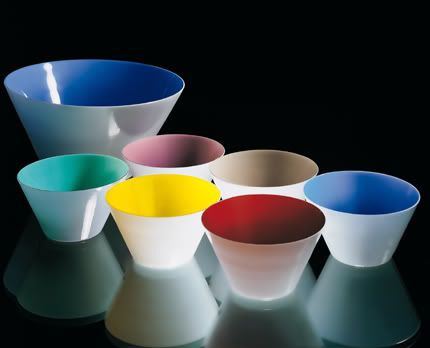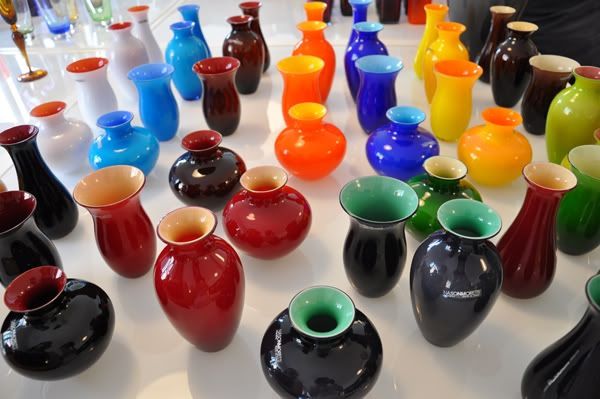NasonMoretti, Murano Venice - Friday June 17th, 2011
On June 17th, we were fortunate enough to visit the NasonMoretti factory in Murano. They have been producing beautiful glassworks since 1925 and are constantly researching new techniques to produce innovative, unique products.
Original colour and chromatic combinations, engravings, and polychrome decorations have all been incorporated into their product lines. NasonMoretti's creativity was recognized in 1955, when they were awarded the prestigious Compasso d'Oro award. This award is given to acknowledge and promote quality in the field of industrial designs made in Italy. It was awarded in recognition of a design by Umberto Nason (the founder), which was a series of twin-colour drinking glasses and small bowls. They were unique in that they broke from tradition and reversed the surface treatment of the bowls. Instead of using a layer of white glass for the inside of the bowl, they coated the outside with white and the inside in a bright colour. We first noticed these bowls at the Compasso D'Oro exhibit in Rome, and were delighted to see them again in the showroom at NasonMoretti. Though this technique is still being employed by the company today, it has evolved over the years to incorporate more dynamic shapes and sizes.
History of Compasso D'oro in the 1950s
"For the first time at the end of the Second World War, Italy was a free and optimistic country. It was, however, very backward by comparison with countries having more advanced economies. Since major industries were suffering from the consequences of the war and the limitations imposed by peace treaties, the development occurred through Italy's small scale industries. This framework of smaller industries proved to be extremely flexible and dynamic. It constantly forsaw consumer behaviour and its further evolution, as well as technical innovation, suitably in tune with the rapidly changing society. Italian firms do not produce mere objects but foster collective images of a future overflowing with beauty, freedom and optimism, thus showing that design can go beyond immediate functionality. It was exactly this attitude that enabled Italian designers to sense the new post industrial trends in affluent contemporary society before anyone else. Wherever the emphasis has shifted from the production goods to image creation, Italian design has shown itself capable of offering solutions involving high quality and cultural excellence, following the move from practical needs to real or presumed desires. "
History of Compasso D'oro in the 1950s
"For the first time at the end of the Second World War, Italy was a free and optimistic country. It was, however, very backward by comparison with countries having more advanced economies. Since major industries were suffering from the consequences of the war and the limitations imposed by peace treaties, the development occurred through Italy's small scale industries. This framework of smaller industries proved to be extremely flexible and dynamic. It constantly forsaw consumer behaviour and its further evolution, as well as technical innovation, suitably in tune with the rapidly changing society. Italian firms do not produce mere objects but foster collective images of a future overflowing with beauty, freedom and optimism, thus showing that design can go beyond immediate functionality. It was exactly this attitude that enabled Italian designers to sense the new post industrial trends in affluent contemporary society before anyone else. Wherever the emphasis has shifted from the production goods to image creation, Italian design has shown itself capable of offering solutions involving high quality and cultural excellence, following the move from practical needs to real or presumed desires. "
-Unicita d'Italia
Keywords: Tradition, Manufacturing, Innovation, Colour, History
Lindsay, Michelle, Alan



No comments:
Post a Comment